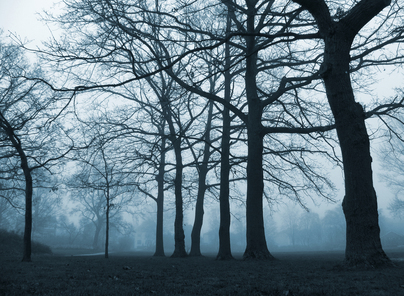Type of Poetry
The more you read up on the different types of poetry the better you’ll understand the techniques used by poets. Listed below is a fairly comprehensive list of the more common types of poems and structures. In some instances you will find examples that show a pattern, rhyme or rhythm.
ABC: This type of poem strives to create emotion and images and consists of five lines. The first four lines are alphabetized and can begin with any letter but the fifth line is not restricted to the use of any letter. Example:
Changes, they are
Dreadful, sometimes
Exacting, occasionally
Fun felt, at times
Life changing and sustaining to the end
Acrostic poem: This is where the first letters of the lines spell out a word if you read them vertically. There are many poems structured like this but probably the most famous is done by Edgar Allen Poe and is called “Elizabeth.” Below is a small example of a poem called Halt.
Halt is stop and wait
Agree to not continue
Lunging forward cautiously
Torn between waiting – moving
Ballad: This type of poem has a rhyming pattern and is usually accompanied by music. Many ballads are used in country music or western-type movies. Ballads are also used in many Latin songs. A ballad rhyme scheme is usually ABCB.
Bio: This poem is written about one’s self life, ambitions and personality traits.
Blank verse poetry: This is unrhymed poetry and usually written in iambic pentameter. The lines can be composed of any meter. This was a favorite during the Renaissance because of its resemblance to classical poetry. This was probably one of the most influential forms of poetry in the English language since the sixteenth century. William Shakespeare wrote much of his plays in unrhymed iambic pentameter.
Canzone: This is a Medieval Italian lyric style poem with five or six stanzas but which has a shorter ending stanza.
Cinquain: This type of poem consists of five lines. The first line is just a one-word title, the second line has two words that describe the title, the third line has three words that tell the action, the fourth line has four words that express the feeling and the fifth line has one word that recalls the title. This takes some thought but can present some good poetry. This poem is called Dolls.
Dolls
Cutesy cuddly
Sleep sooth shush
Sometimes make me smile
Figurines
Classicism: This poetry has the characteristics of Greek and Roman art, architecture and literature. This example is by Alexander Pope and is called Eloisa to Abelard.
In these deep solitudes and awful cells,
Where heav’nly-pensive contemplation dwells,
And ever-musing melancholy reigns;
What means this tumult in a vestal’s veins?
Why rove my thoughts beyond this last retreat?
Why feels my heart its long-forgotten heat?
Couplets: This is a two-line poem with a simple rhyming pattern. Each line should have the same number of syllables and the endings must rhyme with one another.
A spider crawled upon my head
But still ignored my total dread
Elegy: This type of poem is a sad and thoughtful and is written around the death of a person.
Epitaph: This type of poetry is written for those that have died and is usually used as a commemorative inscription for some person’s headstone or tomb.
Ghazal: This is a short lyrical poem that arose with the language Urdu. Urdu is mostly spoken in Pakistan. This particular poem is between five and fifteen couplets long. Each couplet carries its own thought; however, the full poem is linked by rhythmic structure. The lines within the couplets are equal in length. The themes tend to be centered on love and romance but they don’t have to be. In closing the poem, the poet’s name is either mentioned or alluded to in some way.
Haiku: A poem structure used by Japanese but has now made it into the English mainstream. This type of poem is made up of three lines with the first line having five syllables, the second line having seven syllables and the third line having five syllables. Most Haiku poems are usually centered on nature themes.
Trunks meet blue sky and green earth
Trees in abundance
Idyll: This type of poetry depicts peacefulness and many times contains country scenes and includes stories about heroes and the bye-gone age that has eluded us.
Italian Sonnet: Known as Petrarchan sonnet. This follows the rhyme scheme of ABBA ABBA CDE CDE. Note that this has four quatrains and no couplets. Italian Sonnets contain lines that are divided into a group of eight (called an octave) and then are followed by a group of six (called a sestet). Most sonnets are now written with the a-b-b-a, a-b-b-a rhyme scheme and the sestet is either c-d-e-c-d-e or c-d-c-c-d-c. Later another variation was added and this was c-d-c-d-c-d. The following poem is by James DeFord.
Turn back the heart you’ve turned away
Give back your kissing breath
Leave not my love as you have left
The broken hearts of yesterday
But wait, be still, don’t lose this way
Affection now, for what you guess
May be something more, could be less
Accept my love, live for today.
Your roses wilted, as love spurned
Yet trust in me, my love and truth
Dwell in my heart, from which you’ve turned
My strength as great as yours aloof
It is in fear you turn away
And miss the chance of love today!
Limerick: This poem consists of five lines and has a very distinctive rhythm. It follows a rhyme scheme of AABBA, with the first, second, and fifth rhyming lines being longer than the third and fourth. Limericks are often done with humor, can be mean spirited or have a naughty edge. A good limerick by Edward Lear is shown below.
There was a Young Lady whose eyes,
Were unique as to colour and size;
When she opened them wide,
People all turned aside,
And started away in surprise.
Narrative: This type of poem tells a story and does not follow the traditional rhythms and rhymes used in regular poetry. This story can be true or imagined and it can have all the elements of fiction such as characters, possibly a narrator, a plot or even dialogue. Edgar Allen Poe’s poem, The Raven fits this structure.
Quatrain: This is a stanza or verse consisting of four lines, especially one with lines that rhyme alternately. The rhyming scheme can be ABAB or AABB.
Rhyme Royal: This type of poetry consists of stanzas that have seven lines in iambic pentameter.
Rondeau: This lyrical poem has its origin in France. It contains ten to thirteen lines, has two rhymes and the opening phrase is repeated twice as the refrain.
Sestina: line stanzas plus three lines at the end of the poem. line stanza pattern is ABCDEF FAEBDC CFDABE ECBFAD DEACFB BDFECA. In the last three line section the pattern has two of the words, one in the middle of the line and then one at the end. This is also a very difficult and complex poem to write.
Sonnets: A poem in iambic pentameter and is made up of fourteen lines. English sonnets use quatrains and couplets with this pattern. Rhyming pattern is ABAB CDCD EFEF GG. Many of Shakespeare’s poems were written in this pattern.
Villanelle: This type of poem is less common and much more difficult to form but it does produce thought-provoking effects. The rhyming scheme is sophisticated and can be tricky. The scheme is ABAABAABAABAABAABAA. Note that there is no space between the last two lines. Notice that the first line is repeated as the third line of the second, fourth, and sixth stanzas. See that the third line is repeated at the end of the third, fifth, and sixth stanzas. A very good Villanelle by Dylan Thomas is shown below. It is called Do Not Go Gentle Into That Good Night.
Do not go gentle into that good night,
Old age should burn and rave at close of day;
Rage, rage against the dying of the light.
Though wise men at their end know dark is right,
Because their words had forked no lightning they
Do not go gentle into that good night.
Good men, the last wave by, crying how bright
Their frail deeds might have danced in a green bay,
Rage, rage against the dying of the light.
Wild men who caught and sang the sun in flight,
And learn, too late, they grieved it on its way,
Do not go gentle into that good night.
Grave men, near death, who see with blinding sight
Blind eyes could blaze like meteors and be gay,
Rage, rage against the dying of the light.
And you, my father, there on the sad height,
Curse, bless, me now with your fierce tears, I pray.
Do not go gentle into that good night.
Rage, rage against the dying of the light.
The lines “Do not go gentle into that good night” and “Rage, rage against the dying of the light” are repeated throughout the poem. Notice the structure and rhythm of the poem. This is one of the more difficult structures to work with but when done correctly is very effective.







